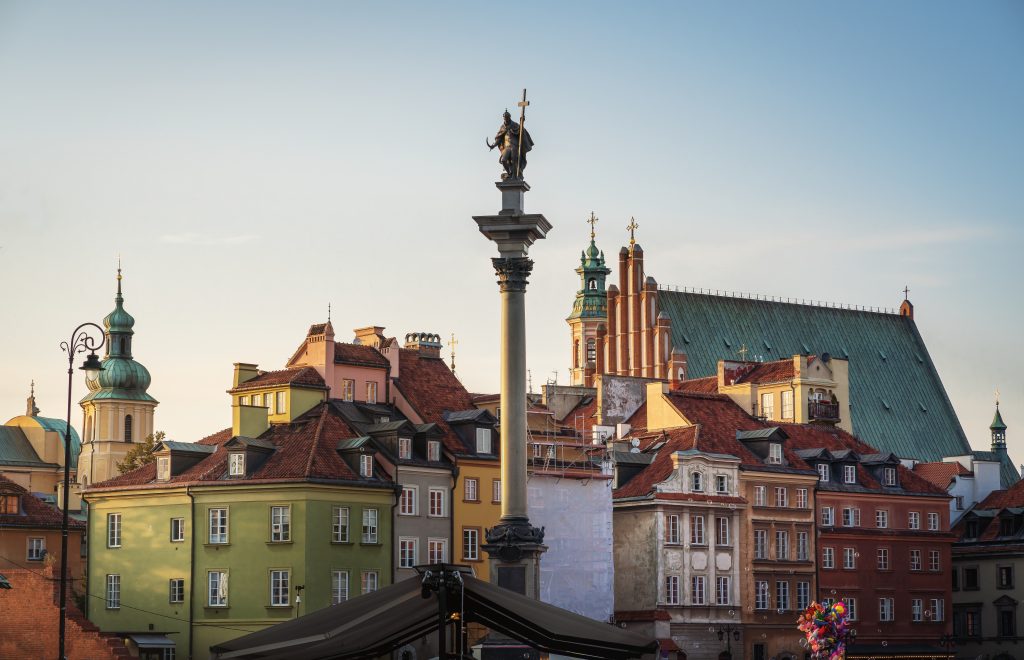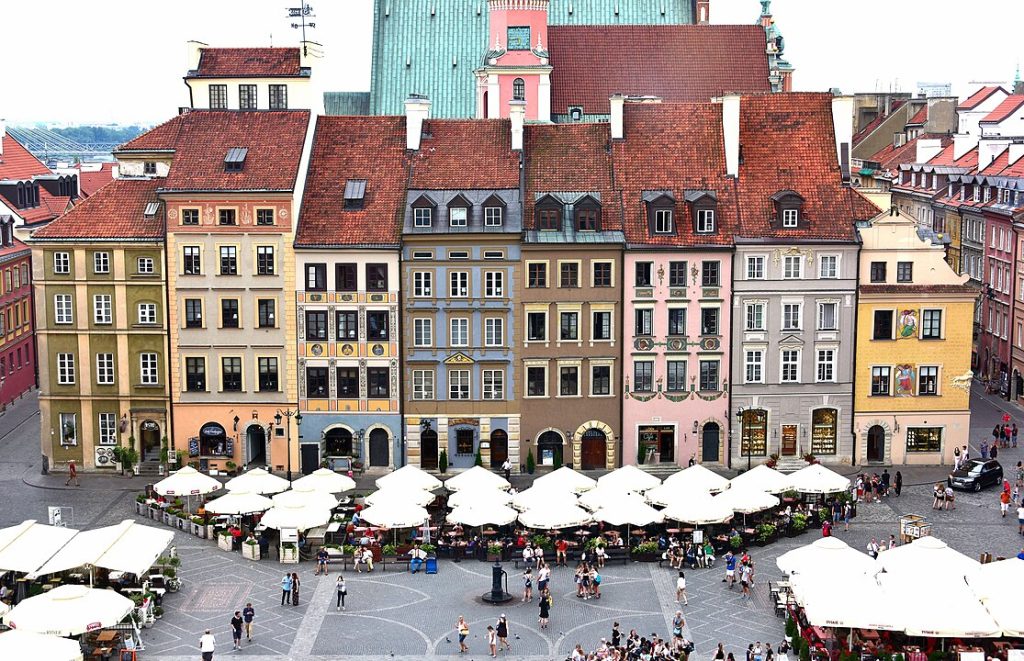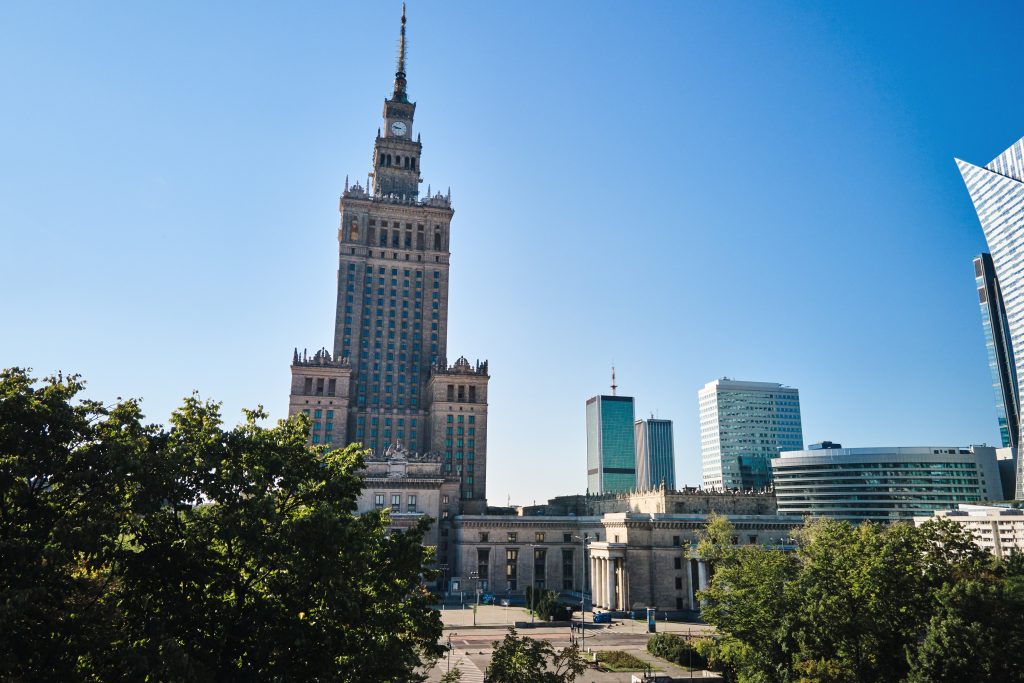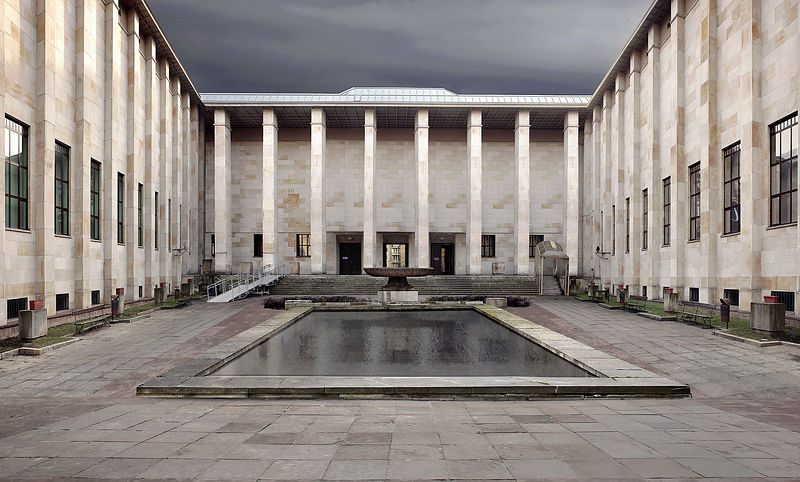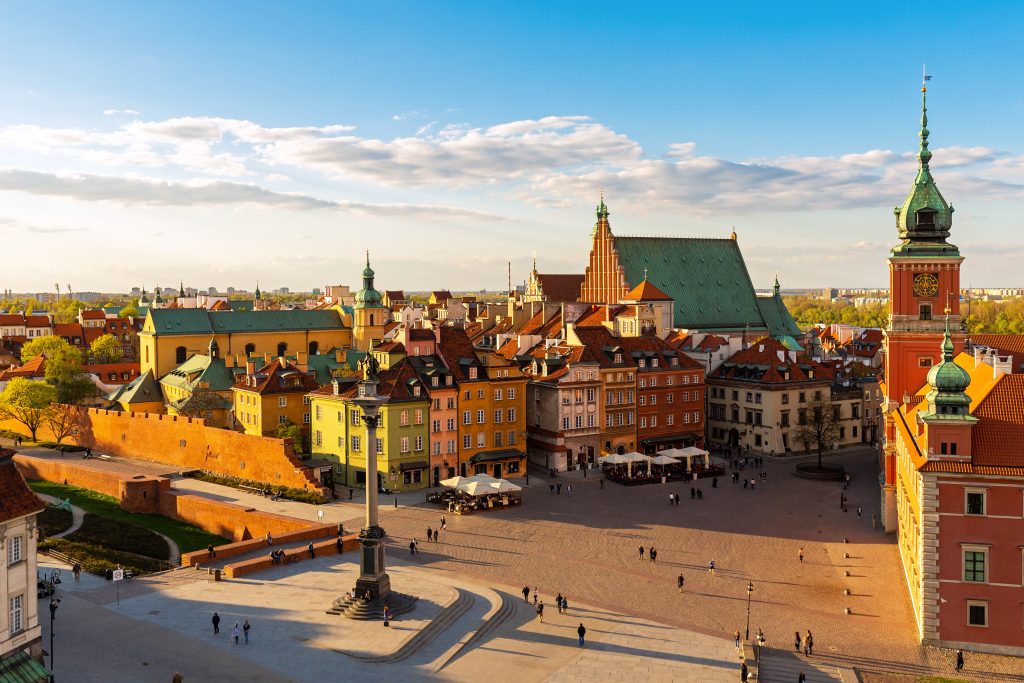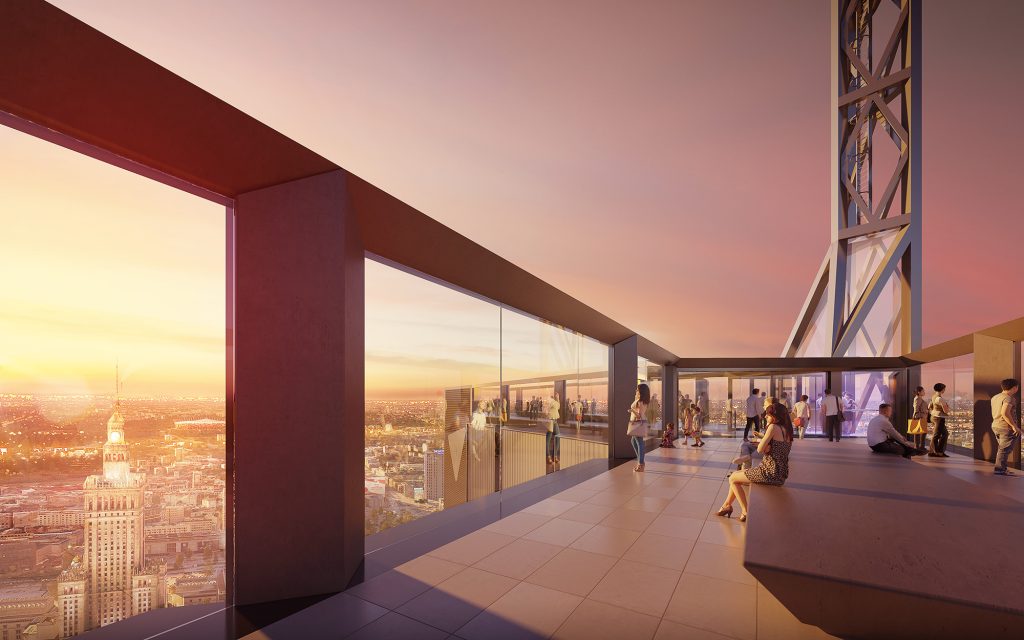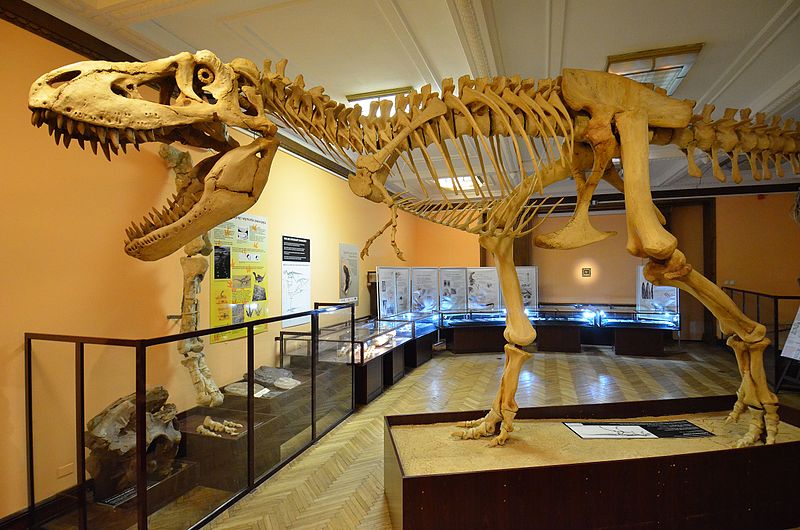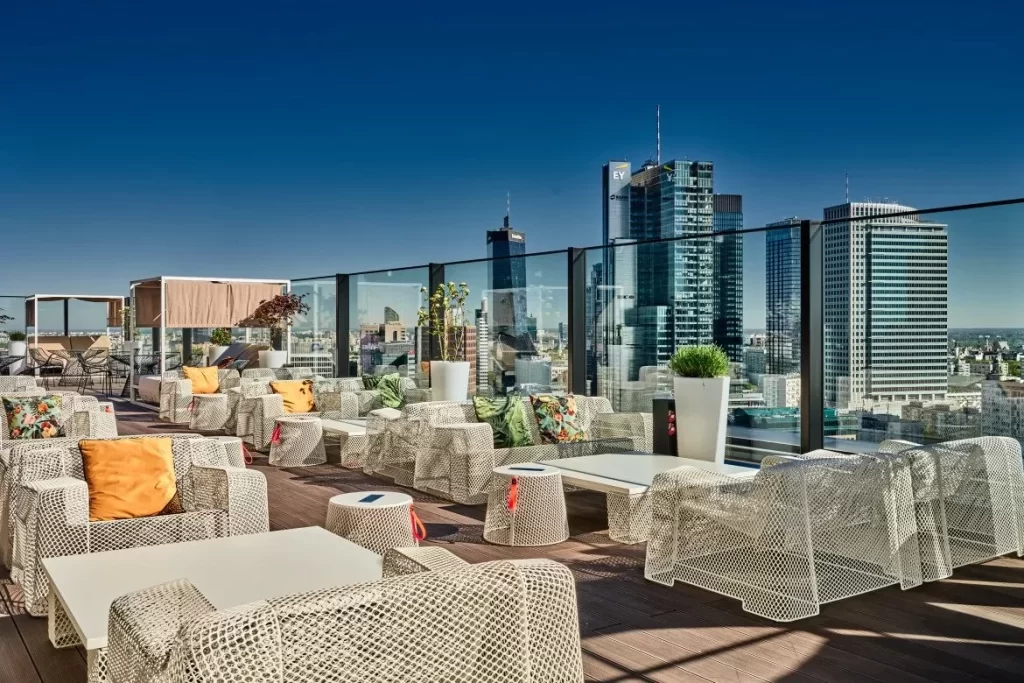- 1️⃣ Introduction - a walk in the footsteps of Warsaw's history
- 2️⃣ Castle Square - the beginning of the royal route
- 3️⃣ Royal Castle and Sigismund's Column
- 4️⃣ St. Anne's Church and observation deck
- 5️⃣ Hotel Bristol and Namiestnikowski Palace (Presidential Palace)
- 6️⃣ Church of the Nuns of the Visitation and Czapski Palace
- 7️⃣ Adam Mickiewicz Monument and Hoover Square
- 8️⃣ University of Warsaw - main campus
- 9️⃣ Holy Cross Church and Chopin's heart
- 🔟 Tyszkiewicz Palace and other aristocratic residences
- 1️⃣1️⃣ Staszic Palace and Copernicus monument
- 1️⃣2️⃣ Krakowskie Przedmieście in the evening - lights, atmosphere and cafes
- 🔚 Summary - a street that tells a story
- 📍 Attractions in the area
- 🔗 Articles similar in subject matter
- 🔥 Most popular articles in the last week
- 💬 Opinions
1️⃣ Introduction - a walk in the footsteps of Warsaw's history
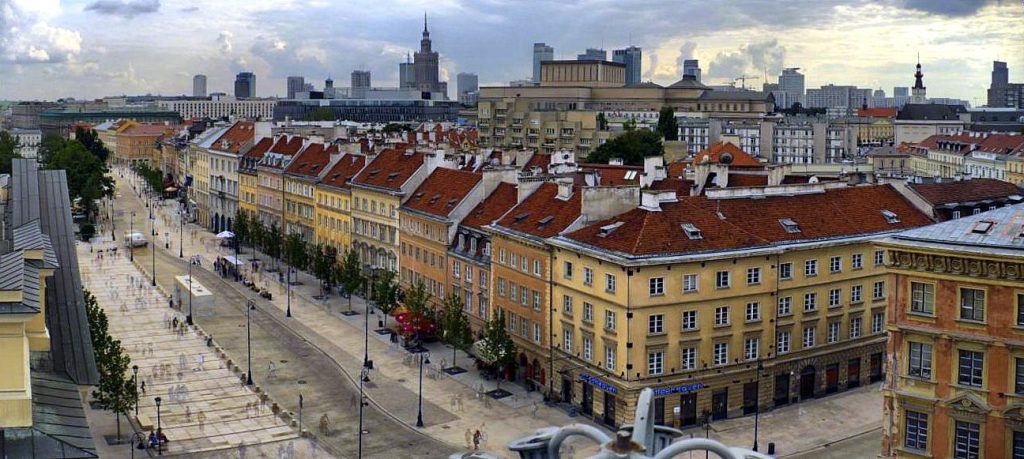
Krakowskie Przedmieście is one of the most representative and also the oldest street Warsaw. It is part of the Royal Route, which for centuries connected the Royal Castle with the royal residences to the south of the city. Today it walking place, meetings, cultural events, but also an important historical axis, at which the fate of the capital is recorded - from the era of the splendor of the Republic, through the destruction of the war, to the post-war reconstruction.
Walking along this route, we can not only admire the historic architecture and traces of past glories, but also better understand the identity of the Warsaw - a multilayered, proud and steadfast city. So let's set out from under Sigismund's Columns, passing palaces, churches and monuments to discover step by step the history written in the walls of Krakowskie Przedmieście.
2️⃣ Castle Square - the beginning of the royal route
📍 For the first time in Warsaw?
👉 See Old Town Square - From it every adventure begins!
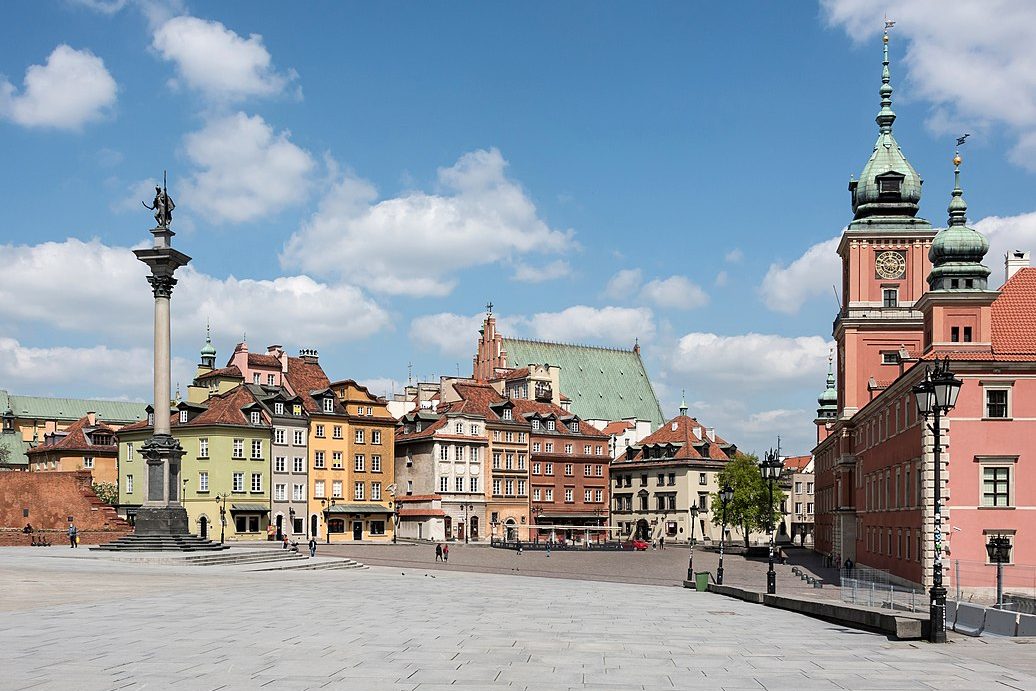
Castle Square is the heart of historic Warsaw and a natural starting point for a walk along the Royal Route. It is the place where symbolism, architecture and history intertwine into one - just one look at the rising Sigismund's Column, to feel the spirit of the former capital.
💠 How was it created and what sets it apart?
The square was already formed in Middle Ages as the space in front of the entrance to the Royal Castle. However, it gained its representative character only in the 17th century, when the king Sigismund III Vasa moved the capital from Krakow to Warsaw. Over the years, the square has been rebuilt several times, and its current appearance is the result of a meticulous reconstruction after the damage World War II.
💠 The role of the square in the life of the city
Castle Square has always been the place milestones - Both official and spontaneous. It was here that the coronation processions, patriotic demonstrations i political rallies. Today the square bustles with life as a popular venue, starting point for excursions and scenography of cultural events.
💠 Symbolism and atmosphere
Dominating the square Sigismund's Column it's The oldest secular monument in Warsaw and at the same time symbol of the transfer of royal power To the new capital. Sam Royal Castle reminds of the power Polish-Lithuanian Commonwealth, and the view of the Royal Route opens up to walkers the gateway to time travel. Castle Square is not only a landmark, but also a The space where the country's history begins anew With each successive glance.
3️⃣ Royal Castle and Sigismund's Column
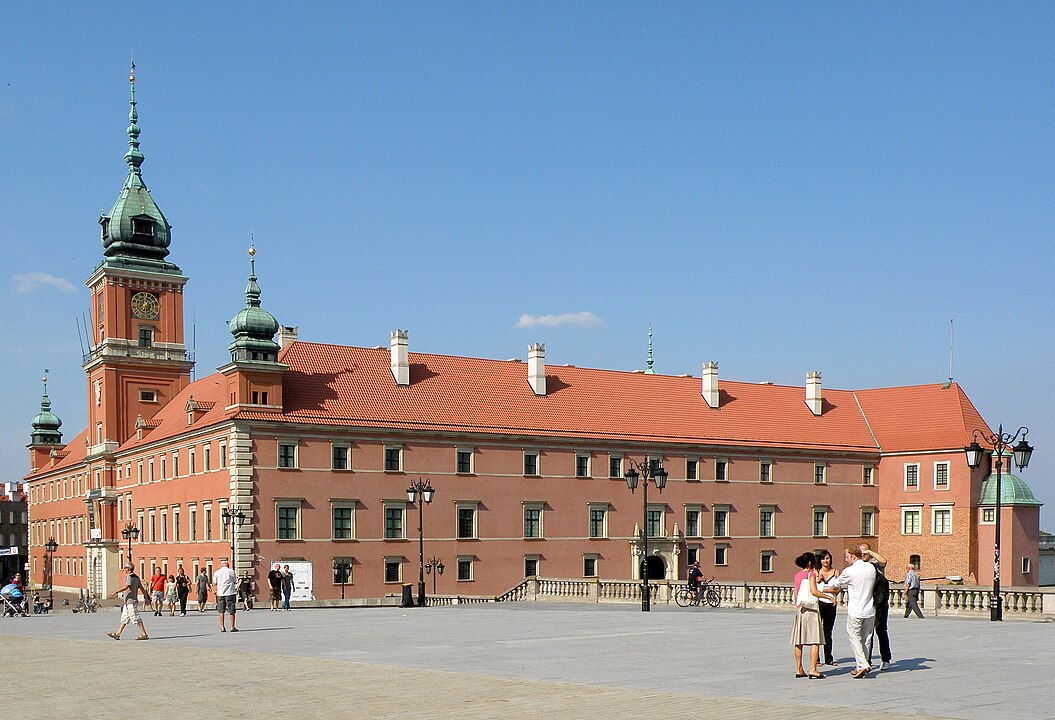
It is here - just off Castle Square - that one of the most important hearts of Polish history beats. Royal Castle is not only the former seat of the rulers, but also the place where the May 3 Constitution was adopted. Next to it rises the Column of Sigismund III Vasa, a symbol of the transfer of the capital from Krakow to Warsaw.
💠 The castle as a witness to history
The first castle buildings were built as early as 14th century As the residence of the Mazovian princes. Over time, especially during the reign of the Sigismund III Vasa, the castle has become the seat of the kings of the Republic, as well as the political and cultural center of the country. It was here that the fate of Poland was decided - in the castle halls the Sejm sat, the king received deputies, and court artists took care of the royal splendor.
💠 Sigismund's Column - a monument with a message
Erected in 1644 On the initiative of Ladislaus IV, the column dedicated to Sigismund III Vasa is now the The oldest secular monument in Warsaw. This is not only an expression of the son's gratitude to his father, but also manifestation of power and continuity of the dynasty. The statue of the king with a sword and cross symbolizes the defense of faith and monarchy. The monument has survived numerous historical upheavals - although destroyed during World War II, it was rebuilt preserving the original elements.
💠 Today: a museum and a reference point
Currently The Royal Castle serves as a museum - In its interiors you can admire, among other things. Throne Room, The Canaletto Room whether Cabinet of King Stanislaw Augustus. For tourists and residents, it is also A place for reflection, national pride and meetings. Sigismund's Column, on the other hand, is not only a landmark, but also a popular starting point for sightseeing in Warsaw - both real and symbolic.
4️⃣ St. Anne's Church and observation deck
👀 Want to look at Warsaw from above?
👉 Check out viewpoints and terraces - free and paid!
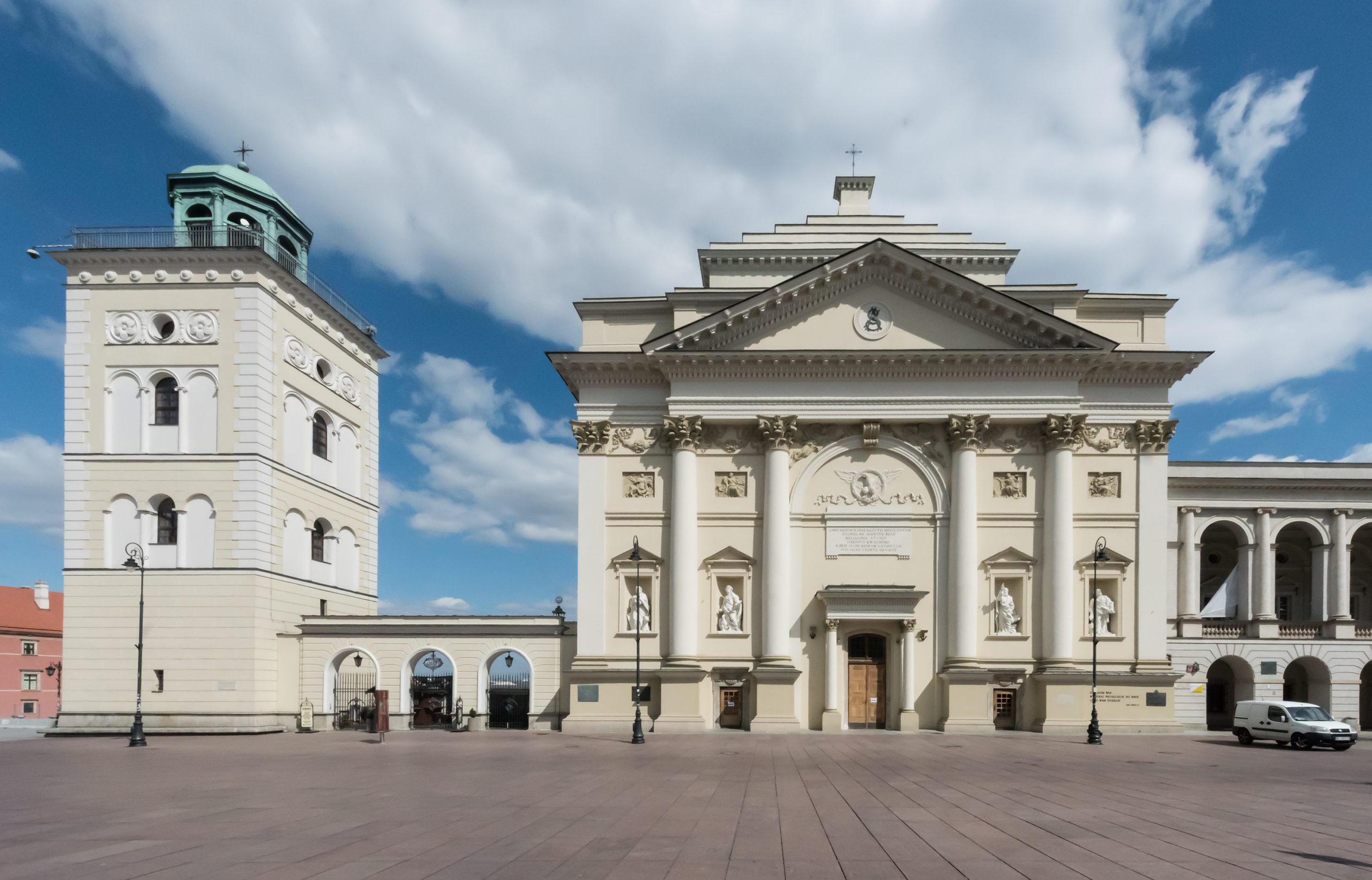
Right next to Castle Square rises the St. Anne's Church, one of Warsaw's most important and beautiful churches. It is not only a place of worship, but also an important landmark, with an extremely rich history and an exceptional view of the city skyline.
💠 Rich history and architecture
The temple was founded in 15th century by Princess Anna Fyodorina, and its current classicist appearance is the result of a late 18th century reconstruction, designed by Peter Aigner. Despite numerous destructions, the church has survived historical storms and retained its monumental portico with colonnade, which has become one of the most distinctive elements of Krakowskie Przedmieście's architecture.
💠 Interior full of art and sacrum
Inside St. Anne's Church you will find, among other things. antique organ, polychromes from the 18th century, as well as chapels of the Czartoryski or Lubomirski families. It is also a place of important religious and academic events - the temple serves as the academic church of Warsaw University, attracting students and intellectuals.
💠 Viewing terrace with a panorama of Warsaw
It is worth climbing the observation tower, which offers a spectacular view of Castle Square, the Old Town, the Vistula River and the National Stadium. This is one of the best vantage points in the center of Warsaw - The perfect place for photos, a romantic moment or reflection on the city's vicissitudes.
💠 A place where the sacred and the everyday meet
St. Anne's Church is a unique space - on the one hand spiritual, on the other - completely inscribed in urban life. Passed by every day by tourists and Varsovians, it remains a A living witness to history and a place of silence in the heart of the capital.
5️⃣ Hotel Bristol and Namiestnikowski Palace (Presidential Palace)
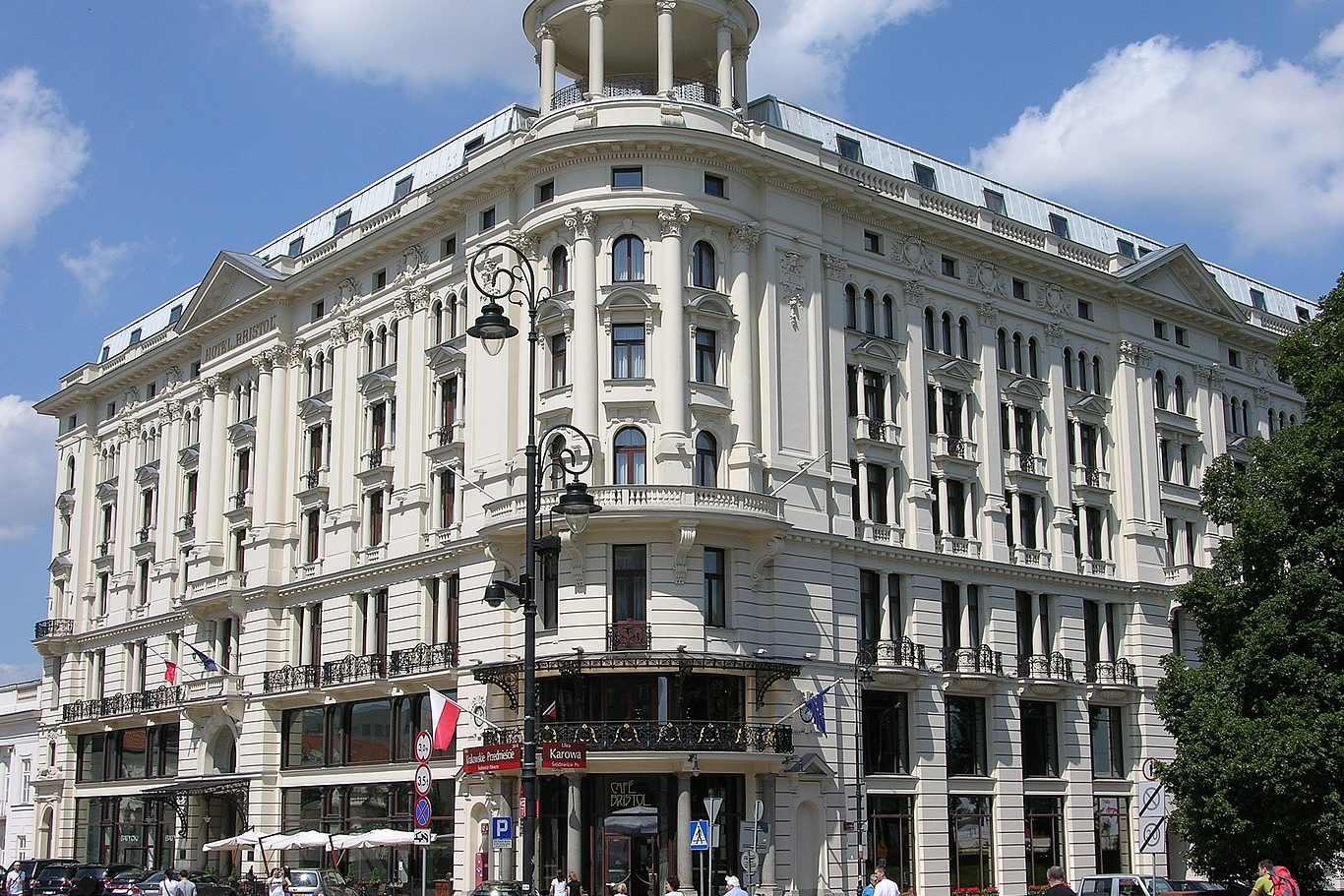
On a further stretch of Krakowskie Przedmieście, between elegance and politics, stand two buildings of great importance to Warsaw's identity: Bristol Hotel - A pearl of Warsaw hospitality and luxury, and Presidential Palace - The place of exercise of supreme power in the state.
💠 Hotel Bristol - a history of style and prestige
Open in 1901, Hotel Bristol was a prestigious place from the beginning - it hosted crowned heads, artists and intellectuals. It was created on the initiative of Ignacy Paderewski, pianist and statesman, who dreamed of a hotel on the scale of European capitals. Eclectic facade, the combination of Neo-Renaissance and Art Nouveau, and the luxurious interiors meant that the Bristol quickly gained a reputation.
It survived the war without major damage, and after a major restoration in the 1990s, it once again became a symbol of elegance. Today it remains one of the of the most luxurious hotels in Poland, where diplomats, artists and politicians from around the world stay overnight.
💠 Namiestnikov Palace - from tsar to president
Just outside of Bristol is the Presidential Palace, formerly known as the Namiestnikowski Palace. Erected in the 17th century as a magnate's residence, it has served many functions over the years - including being the seat of tsarist authorities, the Council of Ministers, and since 1994 has been the official residence of the President of the Republic of Poland.
Classicist facade, a courtyard with a guard of honor and a monument to Prince Joseph Poniatowski create a unique political and historical setting. It is in front of the palace that often take place State ceremonies, foreign visits and important speeches.
💠 Symbolic neighborhood
The two buildings - although with completely different purposes - are united by proximity to the center of state life and elegance that reminds us of the ancient and modern stature of Krakowskie Przedmieście. It is a place where history meets diplomacy, a luxury is adjacent to power.
6️⃣ Church of the Nuns of the Visitation and Czapski Palace
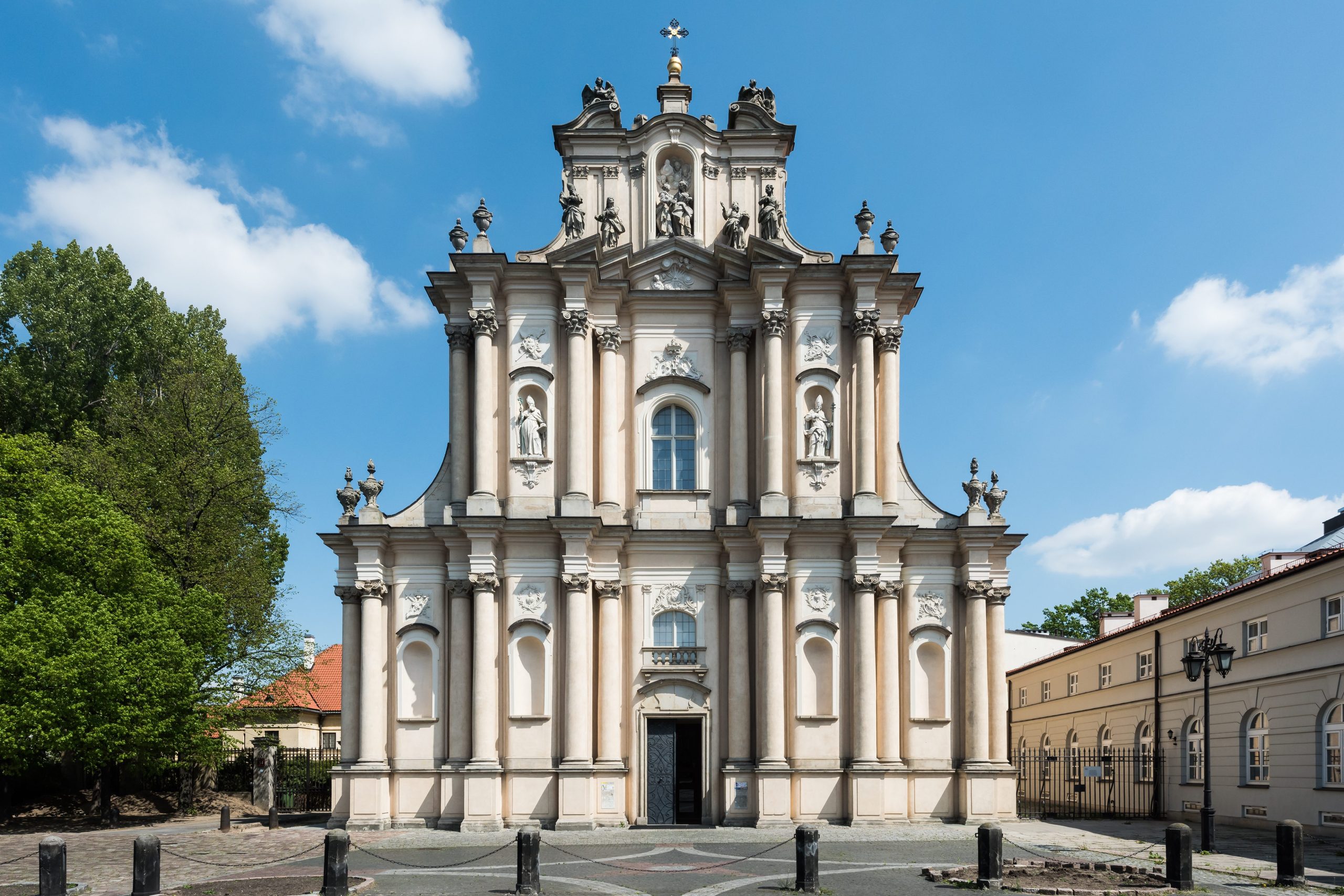
Behind the Presidential Palace, on the same side of the street, is a modest but extremely charming Church of the Visitation. Right next door - Czapski Palace, which today houses the Academy of Fine Arts. It is a corner of Krakowskie Przedmieście, where the The silence of spirituality meets the creative energy of art.
💠 History and spirituality of the temple
The Church of the Visitation was built in 17th century For the order of the Visitation Nuns imported from France. Its Baroque facade and subtle interior full of illusionistic frescoes They delight to this day. Importantly, the temple survived World War II almost unscathed. It is one of the few places in Warsaw where the authentic baroque sacred space has been preserved almost intact.
💠 A place associated with Chopin
It was in the Church of the Visitation young Frederic Chopin played the organ During school masses. Today, this musical tradition continues with chamber concerts and art events. For classical music lovers, this is a unique spot on the walking tour.
💠 Czapski Palace - the residence of art
Directly next to the temple rises the Czapski Palace, where the Chopin family lived for years. Currently, it is the headquarters of the Academy of Fine Arts in Warsaw. Inside are modern lecture halls, art galleries, and historical studios - combining the heritage with a future of creativity.
💠 An atmosphere of focus and artistry
This section of Krakowskie Przedmieście has a exceptional tranquility - Less crowds, more reflection. Walkers often stop here to admire the architecture, listen to music or take a peek at one of the university's exhibitions. It's a place where faith, history and art They walk hand in hand.
7️⃣ Adam Mickiewicz Monument and Hoover Square
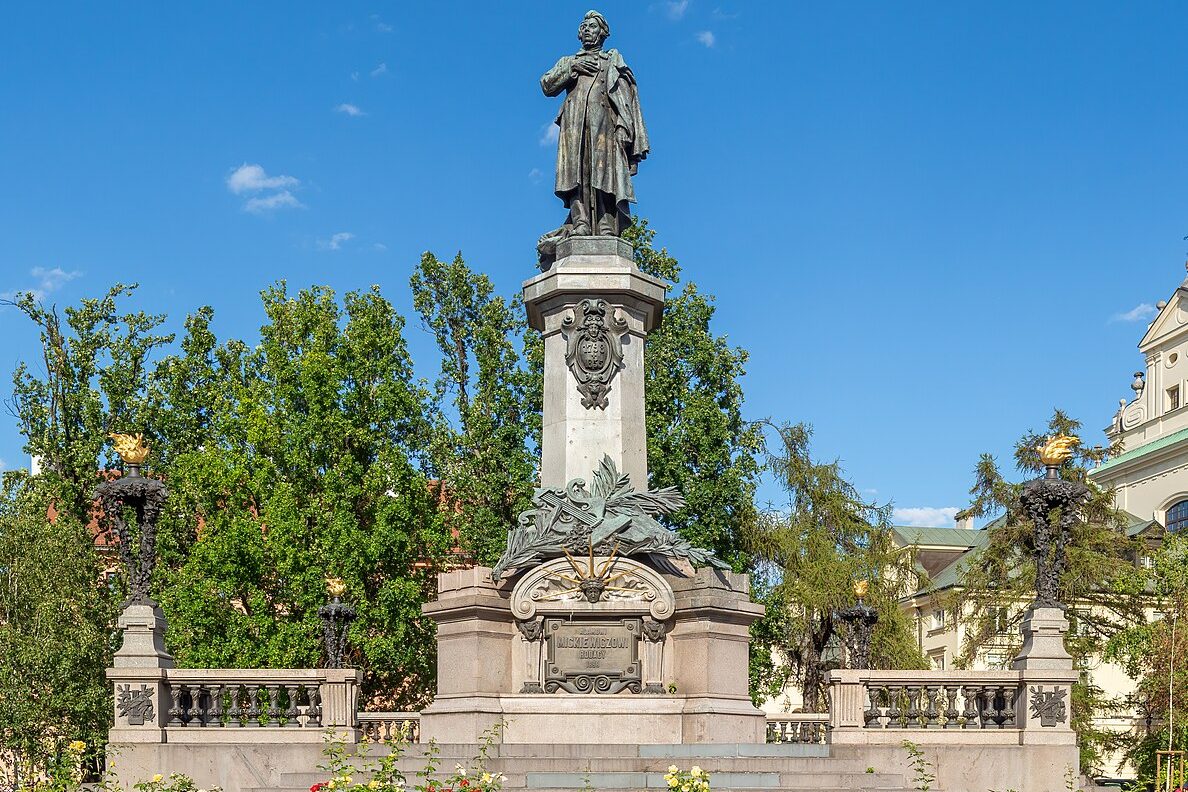
Right at the intersection of Krakowskie Przedmieście and Karowa Street is one of Warsaw's most recognizable walking places. Monument to Adam Mickiewicz, which for more than a century has been a reminder of the power of words, spirit and national identity. It is accompanied by Hoover Square, a green space bustling with life all year round.
💠 History and symbolism of the monument
The monument was unveiled in 1898 to mark the centennial of the poet's birth. It was created thanks to community contributions and quickly became a a symbol of resistance to the partitioners - This is because its erection was an agreement by the tsarist authorities to honor a prominent figure of Polish culture in public space. The monument survived the turbulent times, although in 1944 it was destroyed by the Germans and then rebuilt in 1950 While maintaining the original design.
💠 Hoover Square - a meeting place
Directly in front of the monument is the Hoover Square, named after Herbert Hoover - US President and organizer of humanitarian aid to Poland after World War I. Today it is a popular space with benches, a fountain and seasonal cafes, where locals and tourists alike enjoy relaxing.
💠 Why stop in?
This is one of those places that connect culture, history and daily life of the city. The Mickiewicz Monument is a frequent gathering point, a place to lay flowers on the occasion of anniversaries and silent manifestos. Hoover Square, on the other hand, creates a space to catch your breath in the shade of the trees and look at Warsaw from the side of reflection, not just the monuments.
8️⃣ University of Warsaw - main campus
🎨 Love art, but don't want to spend a fortune?
👉 10 free museums in Warsaw - explore the capital without a ticket!
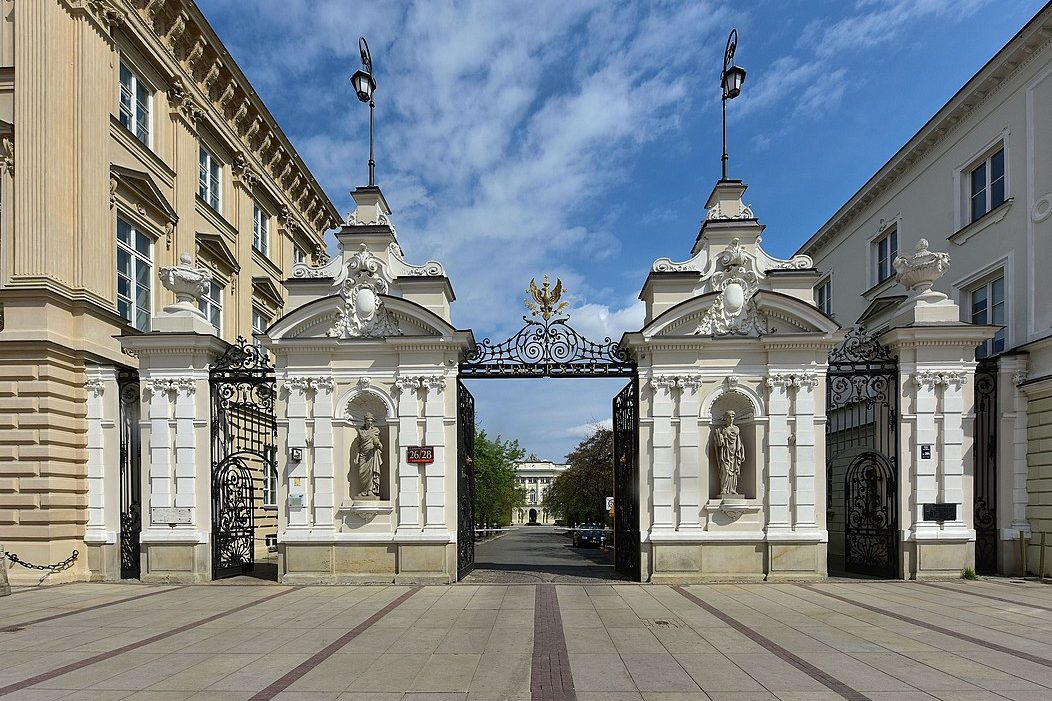
After walking past the Mickiewicz Monument and Hoover Square, we find ourselves at a monumental gate leading to one of Poland's most important scientific centers. University of Warsaw. Behind the wrought-iron gate with the university's coat of arms stretches the main campus, which is not only an academic space, but also a historic architectural complex.
💠 History of the university and architecture
Warsaw University was founded in 1816 on the initiative of Prince Adam Jerzy Czartoryski and King Alexander I. From the very beginning it was to be a symbol of enlightenment and intellectual development Kingdom of Poland. The buildings within the campus date from different eras - you will find here both the classicist Kazimierz Palace (the former residence of kings) and 19th-century faculty edifices.
💠 Cultural and scientific significance
The university played a huge role in the history of Poland - outstanding scientists, politicians, writers were educated and lectured here. During the partitions, occupation and communism, the university was a refuge of free thought and intellectual independence. Today, the University of Warsaw is not only a renowned academic institution, but also a an important element of the urban landscape, open to tourists and residents.
💠 A walk around the campus
Take a peek through the main gate and stroll through the campus alleys to see, among other things, the following. Tyszkiewicz-Potocki Palace, Auditorium Maximum building whether the building of the former University Library. In summer, the space is bustling with activity - students relax here between classes, and visitors can feel the academic atmosphere of old Warsaw.
9️⃣ Holy Cross Church and Chopin's heart
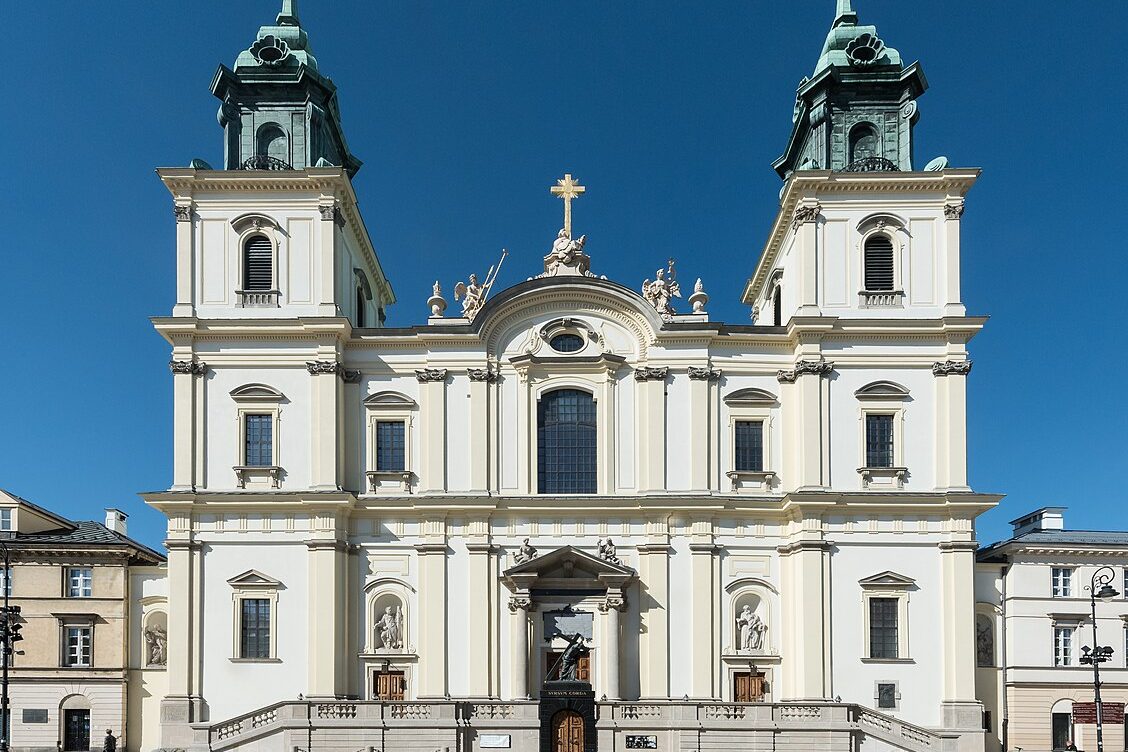
A few steps away, just outside the gate of the University of Warsaw, rises the massive facade of the Church of the Holy Cross - One of Warsaw's most important temples. It is a place of both deep spirituality and Frederic Chopin's symbolic return to his homeland - His heart was deposited in the left pillar of the church.
💠 History of the temple
The original wooden church was built on this site as early as the 16th century, but its current appearance is due to the Baroque-style expansion in the 17th-18th centuries. During World War II the church was almost completely destroyed, and it took until the 1950s to rebuild it.Today it impresses symmetrical facade with two towers, monumental staircase and rich interior.
💠 Chopin's heart - a symbol of return
According to the last will Frederic Chopin, his sister Louisa brought back from Paris an urn containing the composer's heart, which has been walled in one of the pillars church. The plaque with the inscription "Here rests the heart of Frederic Chopin". has become one of the most symbolic national memorials. It is here that many music lovers and patriots pay tribute to the great artist.
💠 Spiritual and musical life
Holy Cross Church is a venue for regular concerts, especially organ concerts - its instruments are among the the largest and most beautiful in Poland. The temple also serves as an important center of religious life - academic ceremonies, masses for the homeland and state events are held here.
💠 Silence in the heart of the city
Despite being located on a busy street, the interior of the church is surprisingly peaceful and majestic. It is worth entering to pause for thought, listen to music or just look at the plaque with Chopin's heart - and feel how history and emotions still live within these walls.
🔟 Tyszkiewicz Palace and other aristocratic residences
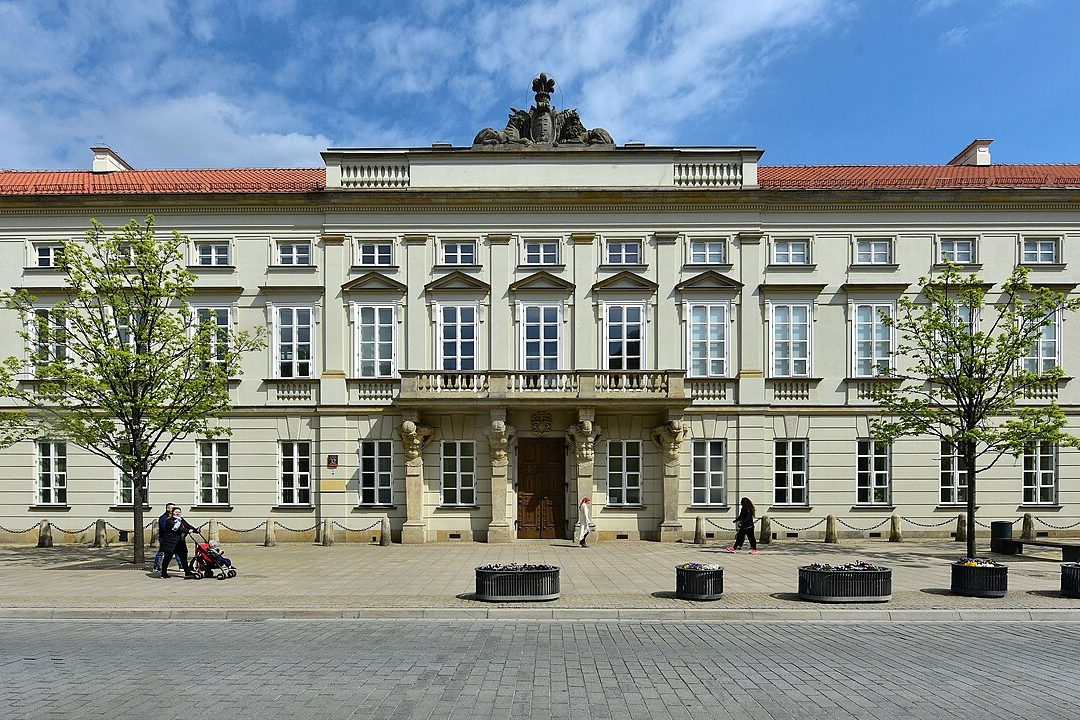
Wandering further along Krakowskie Przedmieście, we come across the Tyszkiewicz Palace - One of the most beautiful classicist palaces in Warsaw. It is an example of a former aristocratic buildings, which once dominated this prestigious street. In its vicinity we also pass other magnate palaces, which recall the capital's splendor of the 18th and 19th centuries.
💠 History and architecture of the Tyszkiewicz Palace
The residence was built in the years 1785-1792 for Ludwik Tyszkiewicz, the Grand Hetman of Lithuania. Its designer was Jan Chrystian Kamsetzer, an associate of Dominick Merlini. The building impresses the elegance of classicism - With a distinctive colonnade, balcony and details inspired by Roman architecture.
💠 From residency to university headquarters
The palace passed into state hands in the 19th century and has been rebuilt several times since then. Currently, it houses Faculty of Applied Linguistics, University of Warsaw. This is an excellent example of how old architecture can be adapted to modern needs while maintaining its unique character.
💠 Aristocratic atmosphere of Krakowskie Przedmieście Street
In this part of the street, other former palaces are also worth noting. The Potocki, Uruski, or Radziwill families - Some of them have official, cultural or educational functions today. Walk along these residences, It's easy to imagine the Warsaw of centuries ago, when the political and cultural elite of the Republic met here.
1️⃣1️⃣ Staszic Palace and Copernicus monument
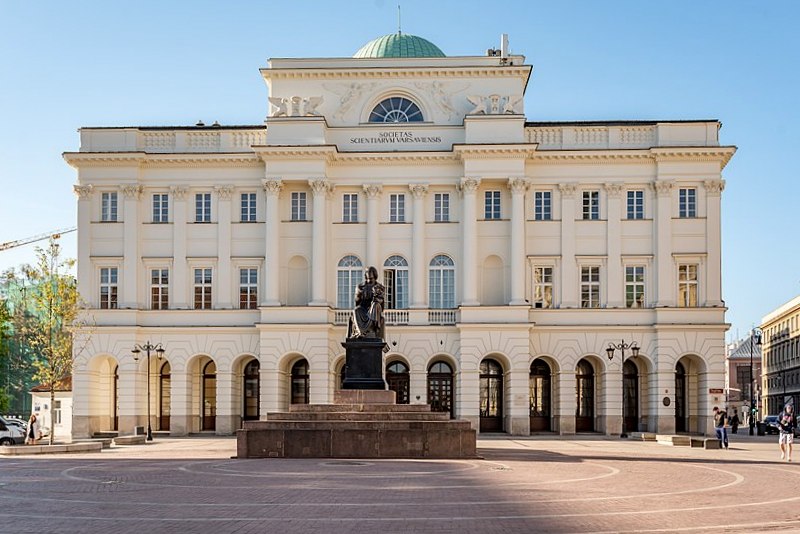
Further down Krakowskie Przedmieście, the atmosphere begins to dominate Warsaw aristocracy centuries ago. Sumptuous facades, elegant gates and elaborately decorated portals remind us that this street was once a social and political salon for the elite of the Republic. Prominent among them are Tyszkiewicz Palace, a masterpiece of classicism.
💠 Tyszkiewicz Palace - a pearl of classicism
Built in the years 1785-1792 by design Stanislaw Zawadzki, the palace was owned by one of the most prominent magnate families - the Tyszkiewicz family of the Leliwa coat of arms. Attention is attracted primarily Classicist portico with eight columns and the elegant symmetry of the facade. Although the building has been destroyed and rebuilt many times, it has retained its original charm. It currently houses Faculty of Neophilology, University of Warsaw.
💠 Residences all around - a mosaic of styles
There are other no less impressive palaces in the neighborhood:
- Potocki Palace - Now the headquarters of the Ministry of Culture and National Heritage,
- Uruski Palace - With a beautiful Neo-Renaissance façade,
- Tarnowski Palace - Formerly serving a representative function.
Together, these residences form architectural gallery of styles and eras - From the Baroque to Classicism and Neo-Renaissance. Each of them hides its own history and the fate of the families that shaped the political and cultural life of the country for centuries.
💠 A walk in the footsteps of the aristocracy
Walking through this part of Krakowskie Przedmieście, it is worth paying attention to the details -. family crests, wrought iron balconies, classicist cornices. It is these elements that build the unique atmosphere of this street, which for centuries has been a a symbol of prestige, culture and political influence.
1️⃣2️⃣ Krakowskie Przedmieście in the evening - lights, atmosphere and cafes
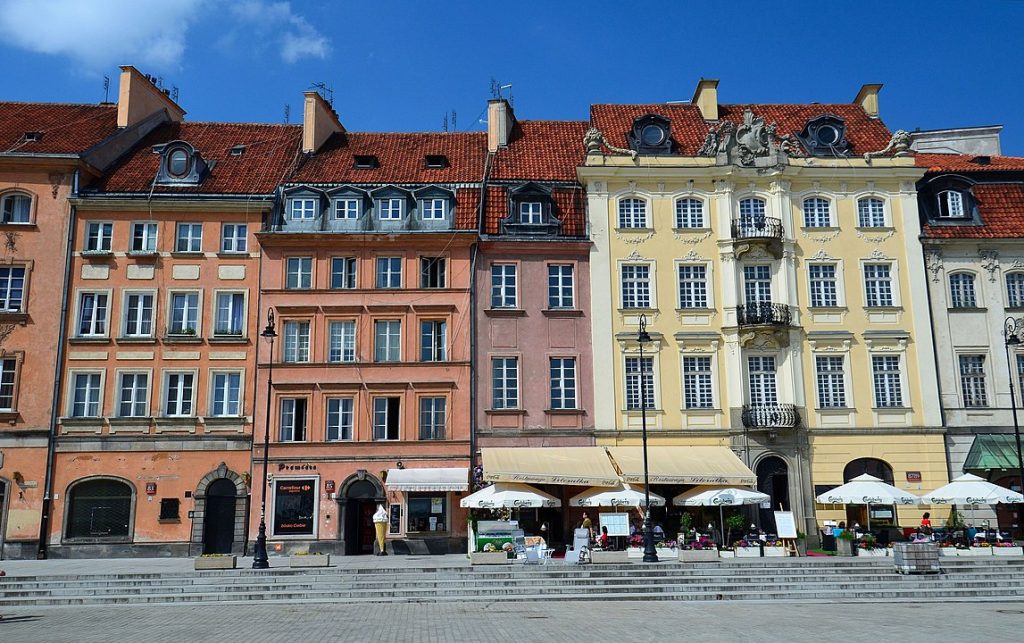
When the sun hides behind the horizon, Krakowskie Przedmieście does not fall asleep - on the contrary, it takes on a magic glow. Illuminated by lanterns and decorative lamps, with open cafes and quiet pedestrian traffic, it turns into a place for strolling, conversation and reflection. An evening stroll along this route is like a journey through the a poetic version of Warsaw.
💠 Play of light and shadows
The Royal Castle, the Sigismund Column, the Presidential Palace - all these buildings take on a different character in the evening. Their facades, illuminated by spotlights, seem almost theatrical, and the light reflecting off cobblestone sidewalks creates an intimate atmosphere. In the background you can hear the music of street performers, the sound of bells and the quiet bustle of the city, which rests, but is not silent.
💠 Cafes and restaurants with atmosphere
In the evening, Krakowskie Przedmieście turns into a urban living room - with café gardens, stylish restaurants and wine bars. You can enjoy a glass of wine overlooking the Castle, dine within the historic walls or simply sit on a bench and watch the passers-by. It is a favorite place for dates, meetings with friends and moments of solitary contemplation.
💠 A walk with a soul
You don't have to be a tourist to appreciate Krakowskie Przedmieście in the evening. It is then - without crowds and hustle and bustle - that you can feel the the authentic rhythm of the city, immerse yourself in its light, smell and history. An evening walk on this street is not just a sightseeing tour - it experience, which stays in the memory for a long time.
🔚 Summary - a street that tells a story
Krakowskie Przedmieście is not only one of the most beautiful streets in Warsaw - it is a A vivid tale of the fate of the city and the nation. Walking from Castle Square to the border of Nowy Swiat, we pass royal palaces, historic churches, monuments to great Poles, seats of universities and traces of the former elite. Every step is a contact with history, architecture and culture - both ancient and modern.
It is a place that Combines the sacred with the profane, science with art, the everyday with the sublime. In the morning it is full of students, at noon - tourists, in the evening - lovers and dreamers. Regardless of the time of day, Krakowskie Przedmieście delights, inspires and makes you think.
If you want to really feel Warsaw, its memory and temperament, it is not enough just to pass here - you need to stop, look carefully, listen to the voice of the stones. Because this is no ordinary street. It's the story the city whispers to those who want to listen.

